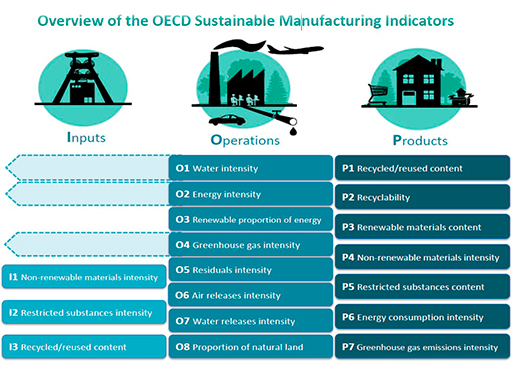Environmental performance indicators
To improve its environmental impact, an SME should measure the impact of its activity on the environment.
SMEs can use indicators to measure their impact on the environment. Entrepreneurs may use these to make decisions relating to the environmental performance of their production site.
Here are the 18 most relevant indicators in this context:
Source: OECD guidelines on sustainable production
Inputs (Input = I):
- I1. Non-renewable materials intensity
- I2. Restricted substances intensity
- I3. Recycled/reused content
Manufacture (Operations = O):
- O1. Water intensity
- O2. Energy intensity
- O3. Renewable proportion of energy
- O4. Greenhouse gas intensity
- O5. Residuals intensity
- O6. Air releases intensity
- O7. Water releases intensity
- O8. Proportion of natural land
Products (Product = P):
- P1. Recycled/reused content
- P2. Recyclability
- P3. Renewable materials content
- P4. Non-renewable materials intensity
- P5. Restricted substances content
- P6. Energy consumption intensity
- P7. Greenhouse gas emissions intensity
These indicators can also potentially be distributed to customers, employees, partners and the SME’s local community, to provide information about the efforts made by the company in relation to the environment.
These indicators also make it possible to compare the activity of one SME with another and to further improve performances.






